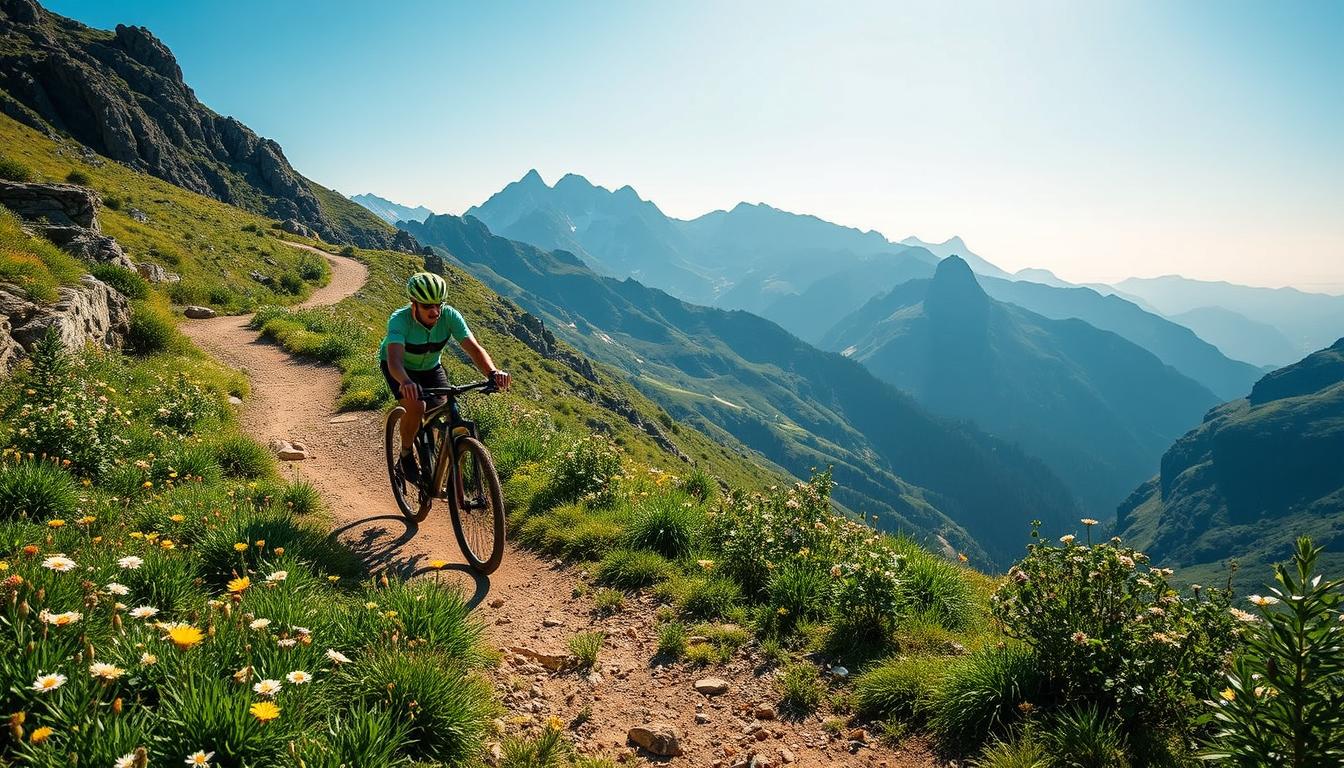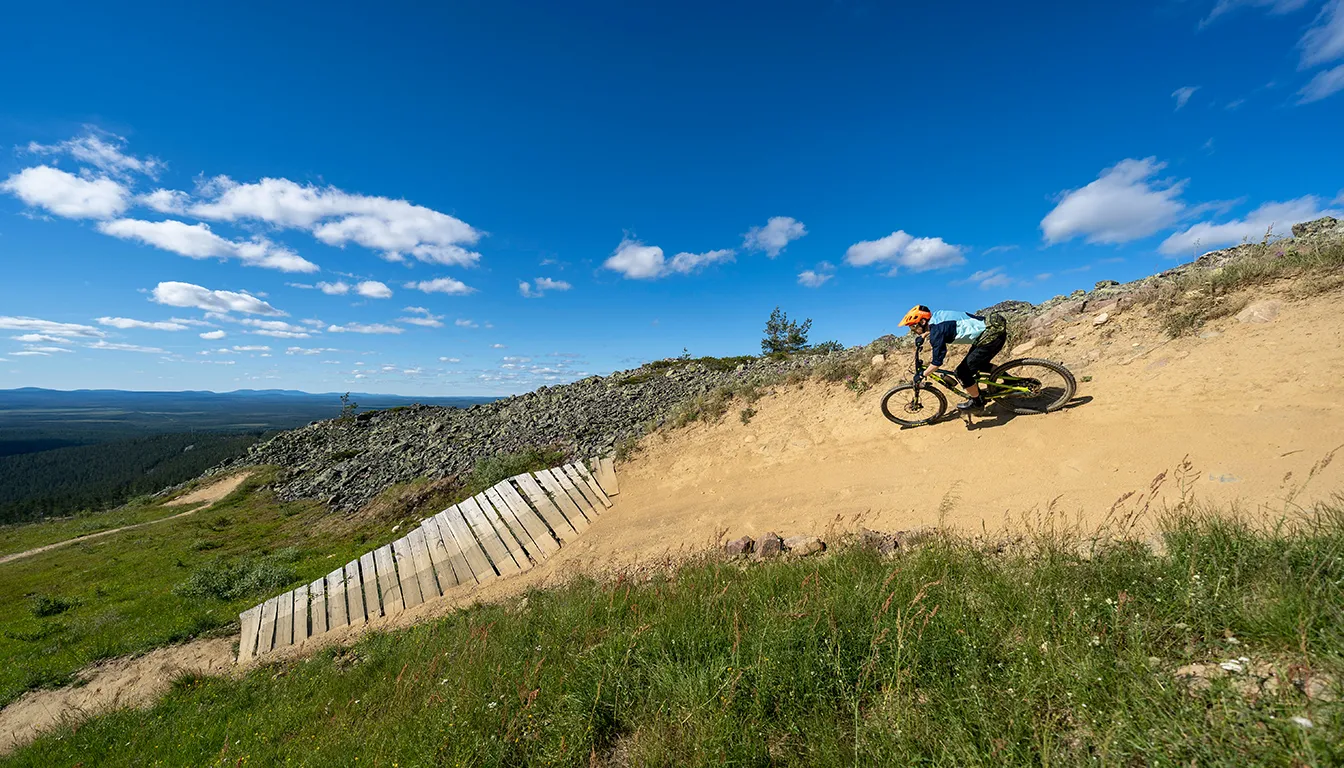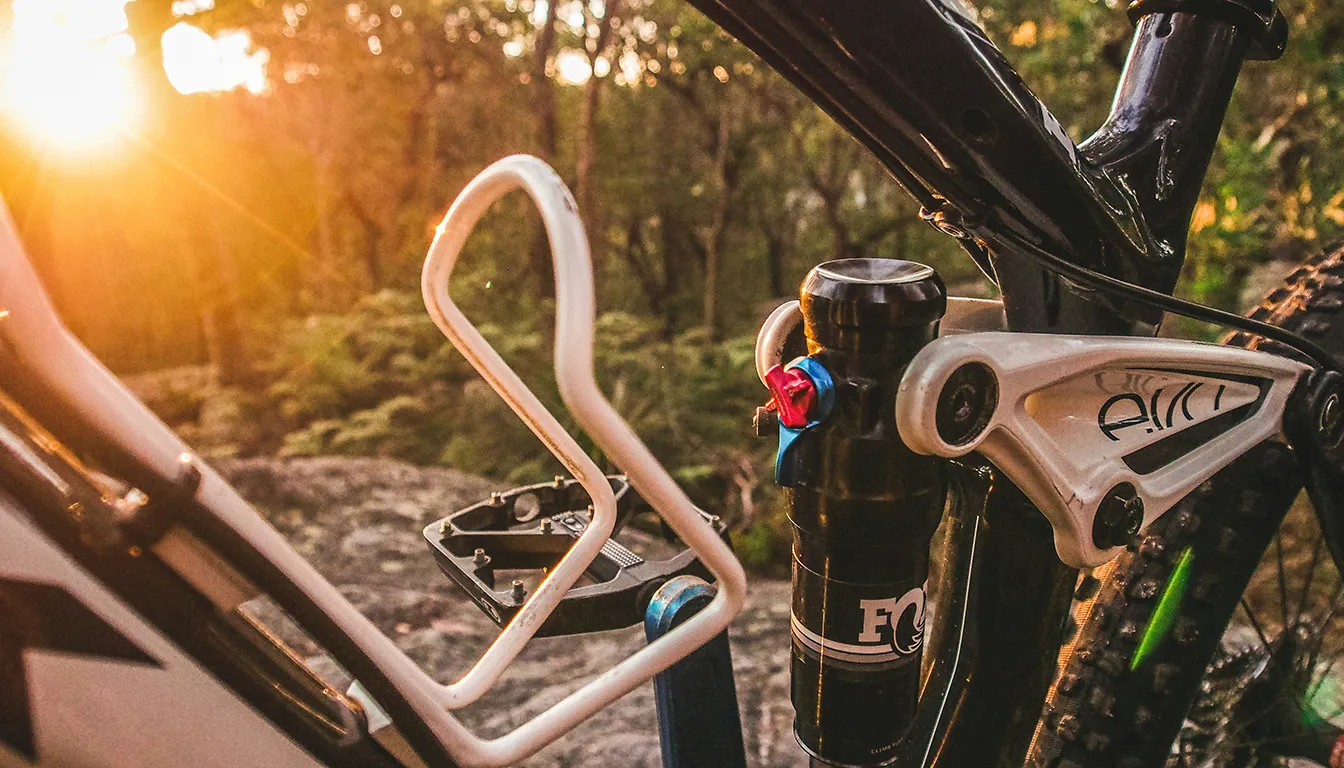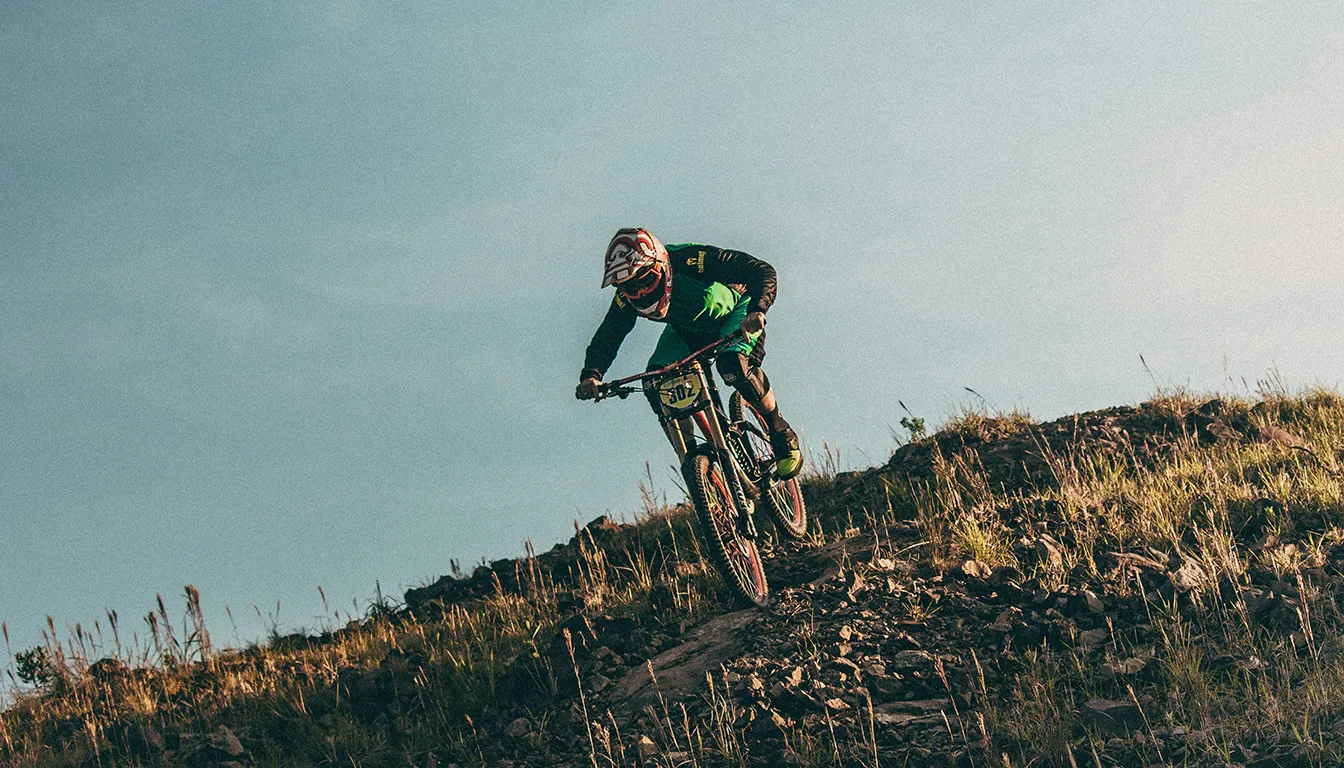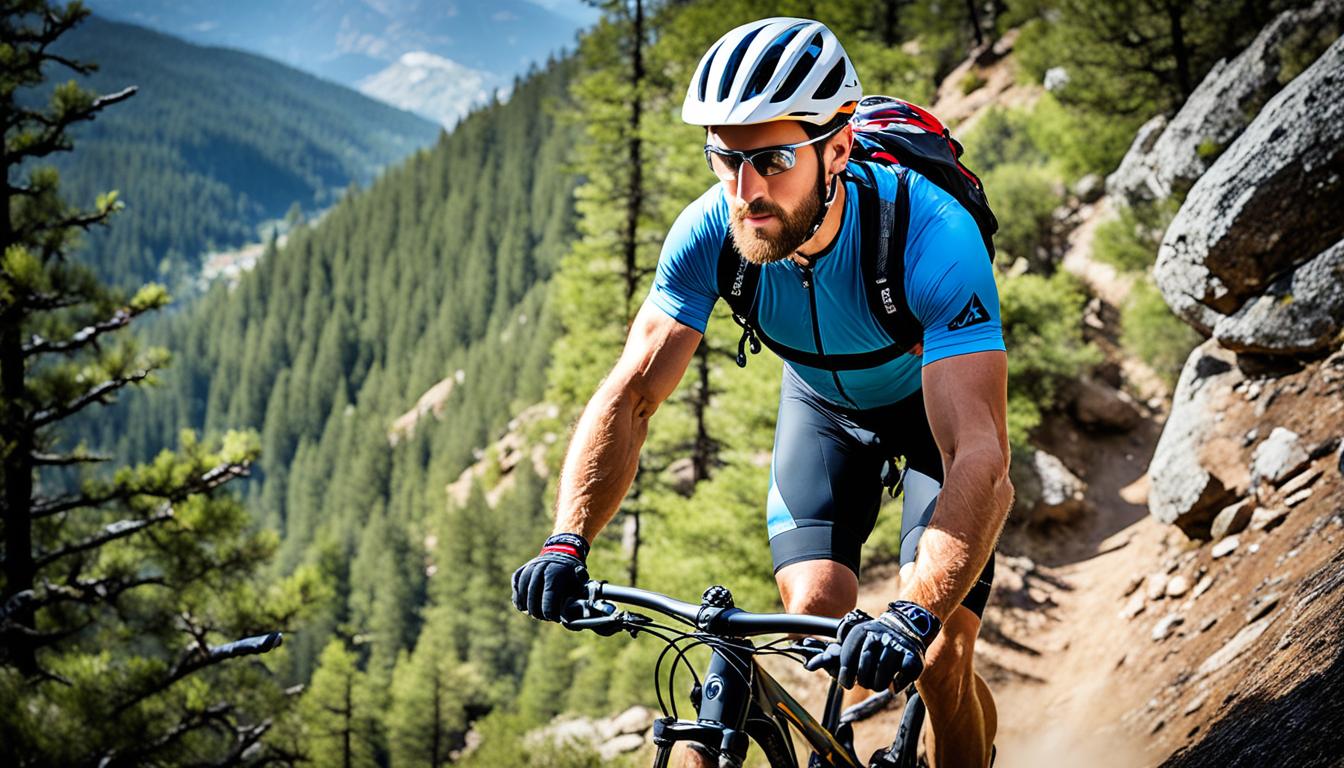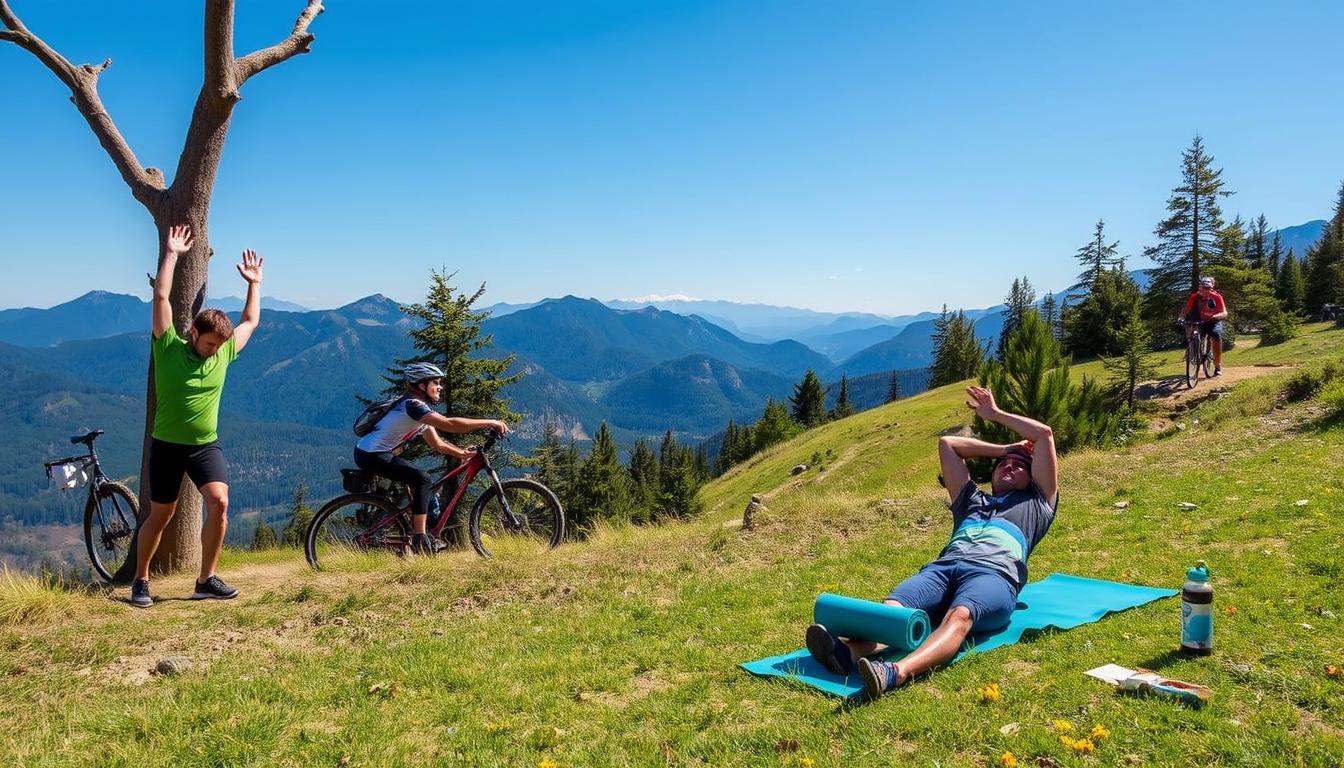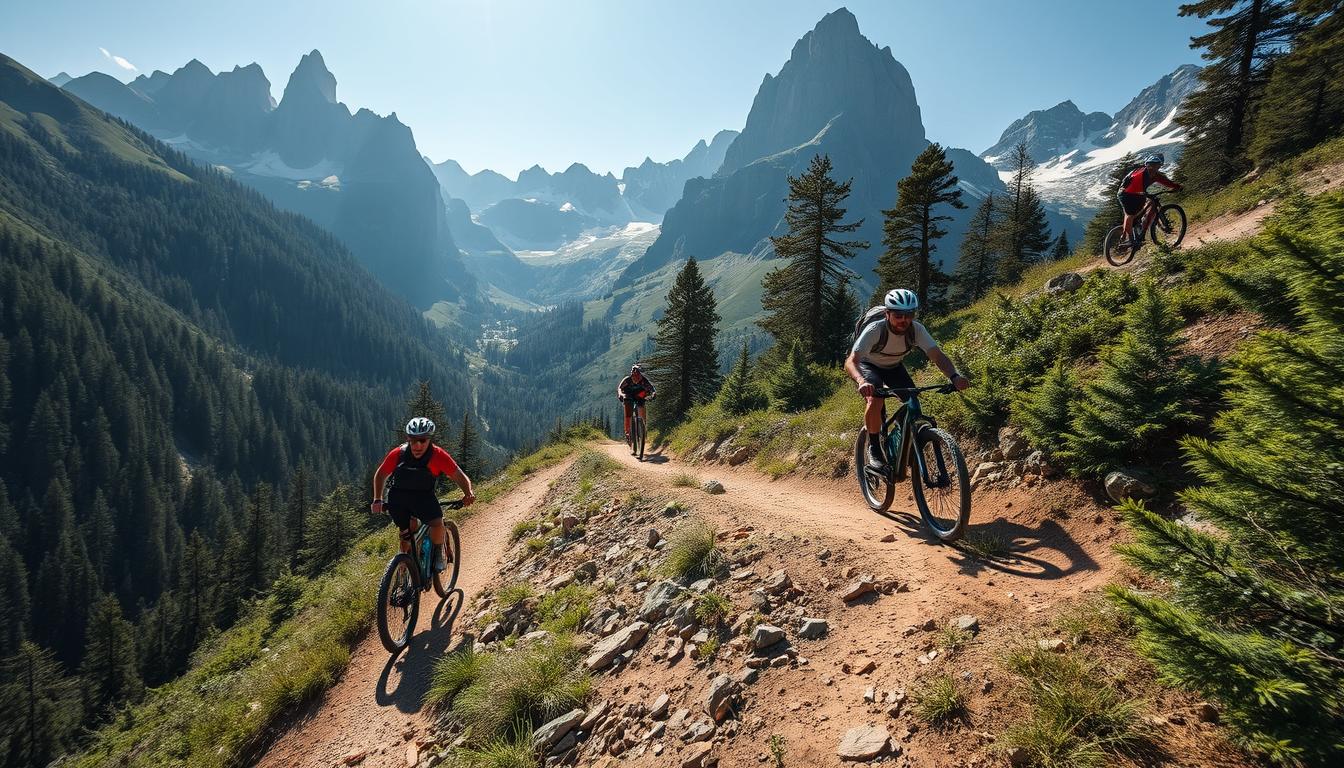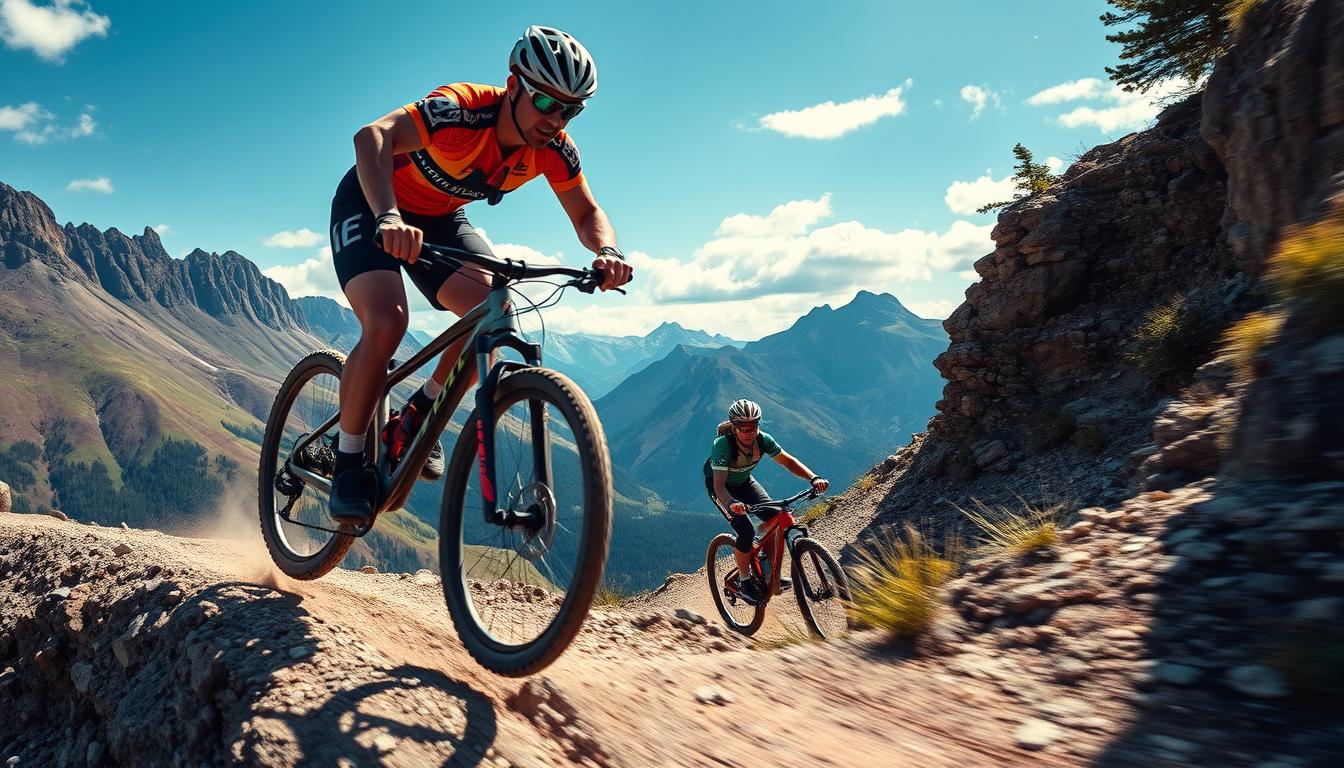Building stamina for mountain biking helps you do better on long, hard rides. It’s important to know the right ways to increase your fitness. This lets you go harder for longer. Riders then enjoy biking more and can handle tough roads better.
To get stronger, bikers should ride more, try fasted training, and eat well. It’s all about finishing longer rides smoothly, even on rough paths. Focusing on these tips makes improving stamina fun and rewarding.
The Importance of Endurance in Mountain Biking
Endurance is vital in mountain biking, shaping a rider’s performance. It helps cyclists keep their energy up and be efficient over long distances. Knowing about endurance helps riders manage tough trails better.
Understanding Endurance
Endurance means the body’s power to keep going over time. For mountain biking, this is key. Riders face long rides with hard parts that need both brain and body strength. A good endurance base cuts down tiredness. This lets riders enjoy their journey more.
Aerobic vs Anaerobic Capacity
Aerobic and anaerobic capacity play different roles in mountain biking. Aerobic capacity is for long, steady rides. Anaerobic capacity is for short, hard efforts, like going up steep hills. Being good at both helps riders tackle all kinds of paths and do better.
Adding activities like running to your training improves endurance. These help with mountain biking by offering varied training. To get better at endurance for mountain biking, find plans that help you improve on various terrains here.
Training for both endurance and strength is key to good mountain biking. If you want to get better at freeride biking, using these strategies can help. Learn more about improving your skills here.
Log Mileage for Improved Endurance
To build endurance in mountain biking, it’s key to log many miles. By riding often, on either mountain or road bikes, riders boost their aerobic fitness. This regular effort helps riders do better in long races. It improves their stamina and how they pace themselves.
Benefits of Increased Mileage
Riding more has many perks for mountain bikers. Riding at a comfy pace lets riders recover while training. These longer rides help build endurance by:
- Boosting aerobic power
- Making recovery easier for the next rides
- Teaching riders to pace themselves in long events
These perks improve not just stamina, but also trail performance. To get better at biking, riders should mix in strength training with their riding. This helps with both endurance and strength.
Incorporating Singletrack Skills
Adding singletrack riding to training brings extra benefits. It sharpens timing and coordination on tricky terrains. Facing tough trails often makes handling different conditions easier. Short, intense interval sessions improve both endurance and bike handling skills. This mix of training boosts overall abilities and keeps bikers keen on improving.
How to Build Endurance for Mountain Biking
To build endurance for mountain biking, try long rides on different types of ground. This method builds your stamina and gets you ready for changing trail conditions. It’s also a chance to improve your biking skills and strategy.
Long Rides on Varied Terrain
Riding for long periods over varied terrain is key to building endurance. Start with at least two hours on your bike and slowly increase your distance, time, and speed. Stay at a comfortable pace that is less than 70% of your Functional Threshold Power (FTP). This helps with recovery and readying you for more training.
Make it a habit to ride for about four hours on weekends. This will greatly improve your strength and stamina.
Utilising Road and Mountain Bikes
Using both road and mountain bikes in your training helps balance fitness and technical skills. Alternating between the two adapts your muscles to the different challenges each bike presents. Add in strength endurance exercises, like repeats with 15 seconds of hard work followed by 45 seconds of easy pedalling, to build up strength and fight off fatigue.
To get better at endurance, look into thorough guides like this one for more tips and strategies.
Strength Training for Mountain Biking
Strength training is crucial for mountain bikers who want to do better. It builds a tough physical base. Including strength exercises in your plan can help meet the power demands of biking.
Building Maximum Strength in the Gym
To produce more force, focusing on maximum strength in the gym is key. Consider doing exercises like:
- Walking lunges with a twist
- Ball pushups
- Deadlifts
- Renegade row/TRX row
- Side plank drops
These exercises work on big muscle groups to increase strength. Aim to do these gym workouts early in the pre-season. This starts you off for more specific strength endurance training later. This plan boosts strength and stamina while lowering injury risks.
Sport-Specific Strength Endurance Workouts
Mountain biking often requires continued powerful moves. Add sport-specific strength endurance workouts to achieve this. A good approach is mixing cycling with strength training. For example, mix in high-intensity bursts, like 4 x 15 seconds hard, followed by 45 seconds easy. This simulates real biking efforts.
It’s important to keep endurance and strength training in balance for the best performance. Dedicate a couple of rides each week just to mountain biking. This improves timing, coordination, and muscle memory. Going for long rides at a gentle pace, mainly in zones 1 and 2, also helps boost your performance without overdoing it.
Utilising Fasted Training Sessions
Fasted training plays a key role in boosting endurance for mountain biking. It trains your body to use fat as the main fuel when glycogen is low. By adding low-intensity fasted workouts to your plan, you can improve aerobic efficiency. These are important for your workout routine.
Benefits of Fasted Workouts
Fasted workouts offer more than just efficient fuel use. They are linked with several benefits:
- Increased mitochondrial biogenesis, boosting endurance capacity.
- Better fat metabolism due to higher levels of interleukin-6, which also protects muscles.
- Improved cognitive function, vital for long bike rides.
- Possible better insulin resistance, aiding in metabolic health.
Best Practices for Fasted Training
Starting fasted workouts needs careful planning for top results without risks. Here are key tips:
- Start gradually: Begin with one fasted workout a week to help your body adjust.
- Progress slowly: Up it to two sessions weekly after a month, focusing on aerobic exercises.
- Monitor intensity: Add sweet spot training later, watching how your body handles more work.
- Avoid high-intensity sessions: Such workouts aren’t ideal fasted as they need carbs for best performance.
- Limit frequency: Stick to a few fasted sessions a week to keep other workouts effective.
Nutrition Strategies for Longer Rides
To enhance performance on long mountain bike rides, getting nutrition right is key. Riders need to drink water and eat regularly to keep energy up. Planning ahead helps avoid tiredness and makes the ride more enjoyable.
Importance of Proper Hydration
Staying hydrated is crucial for lasting through extended rides. Not drinking enough water can hurt your performance and make you tired. It can even be risky for your health. It’s important to drink water often, especially on tough routes. A good hydration plan keeps energy stable and supports the body’s functions.
Eating Frequently During Long Rides
Managing energy on rides longer than two hours matters a lot. Aim to eat 30 to 60 grams of carbs every hour. Foods like sweet potatoes, beans, and whole grains give lasting energy. This avoids sudden sugar level jumps.
Including protein, such as chicken and nuts, helps with muscle repair and maintaining energy. Eating regularly stops hunger and helps you perform better during the entire ride.
Conclusion
Building endurance for longer mountain bike rides needs a well-rounded plan. This plan mixes different training methods, smart eating, and understanding endurance. By riding often on various terrains and adding strength exercises, bikers can boost their mountain biking skills.
By following certain training tips like fasting sessions and focused interval workouts, riders improve both their aerobic and anaerobic strengths. These methods not only get cyclists ready for long rides but also make mountain biking more enjoyable.
It’s clear that combining structured training, good recovery, and the right food and drinks helps cyclists increase their endurance. This complete approach leads to more fun and better results in mountain biking adventures.
FAQ
What is endurance training in mountain biking?
Endurance training in mountain biking focuses on improving heart health and stamina. It helps cyclists keep up a strong pace over long, tough rides. This boosts their overall performance.
Why is endurance important for mountain biking?
Endurance is key for managing tiredness and staying efficient on rides. It’s about keeping up your energy over time. This is crucial for mastering difficult terrains smoothly and powerfully.
How can I improve my endurance through mileage logging?
Riding a lot is the best way to get better at endurance. Regular rides, whether on trails or roads, build up your fitness. They also teach you how to pace yourself for big events.
What role does strength training play in building endurance for mountain biking?
Strength training lays the groundwork for good mountain biking. Exercises like squats and deadlifts boost your power. They should be part of your pre-season routine for the best effect.
What are the benefits of fasted training sessions?
Fasted training teaches your body to burn fat well. These gentle workouts boost your cell’s power plants and your body’s oxygen use. This helps during longer rides.
How important is nutrition during long mountain bike rides?
Eating and drinking right is crucial for long rides. Keeping hydrated and eating carbs often maintains your energy. This helps keep up your performance and aids in recovery after.
How can I plan my training sessions for endurance?
To build endurance, go for long rides in different places that feel like race conditions. Combine road and trail rides. Add long rides on consecutive days to boost your stamina.
What strategies should I use for hydration while mountain biking?
Drink water often and take in 180-300 calories each hour you ride. This stops energy lows and keeps you going strong on your trail rides.
